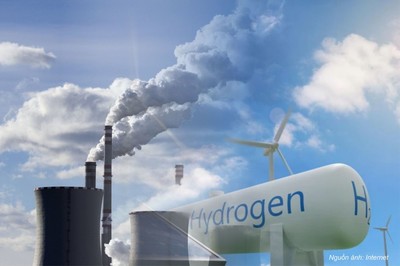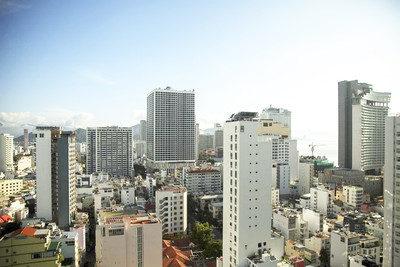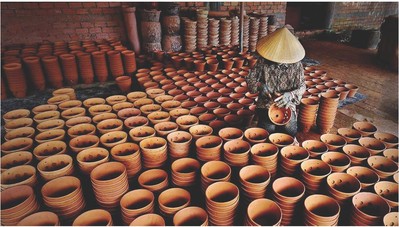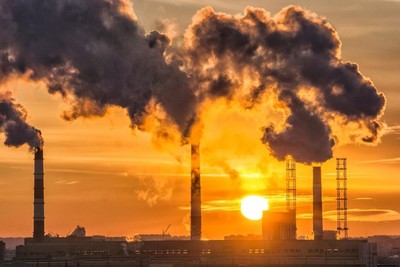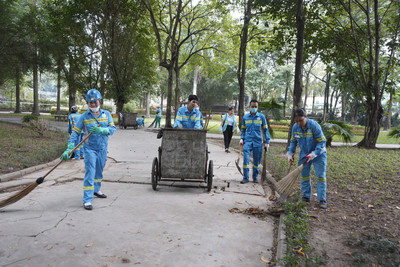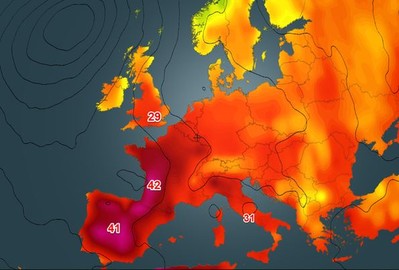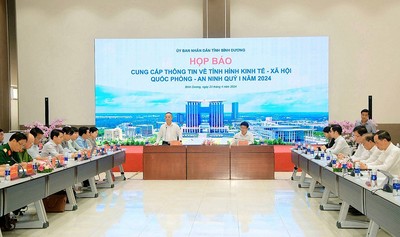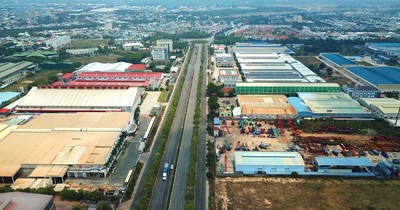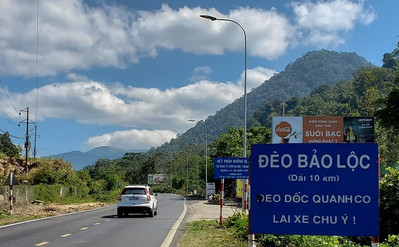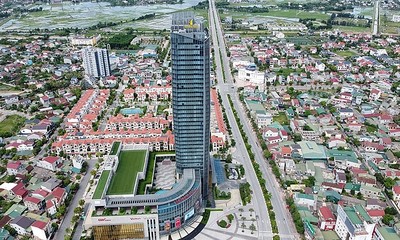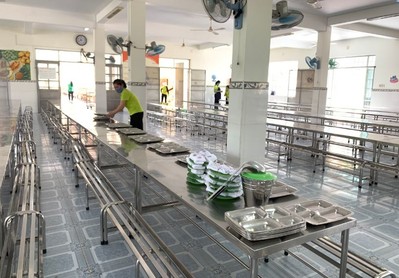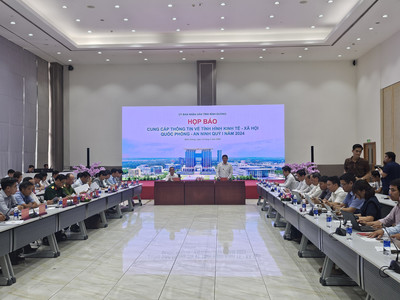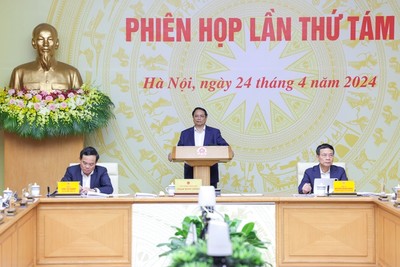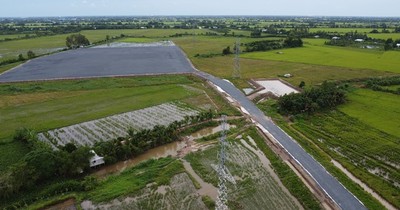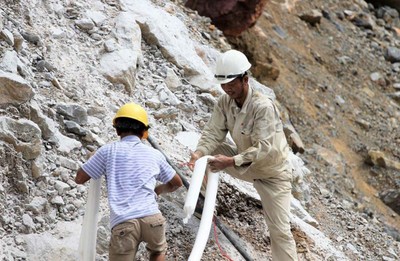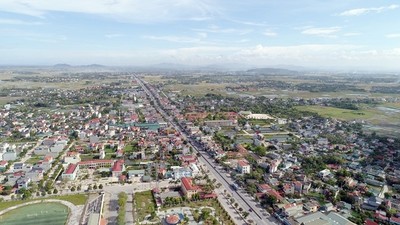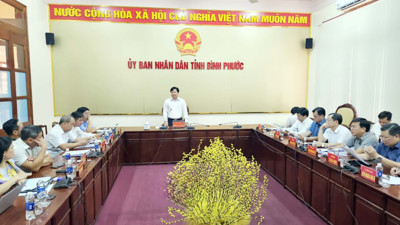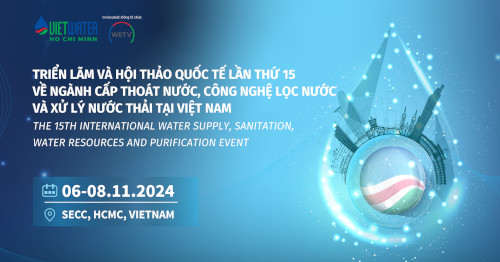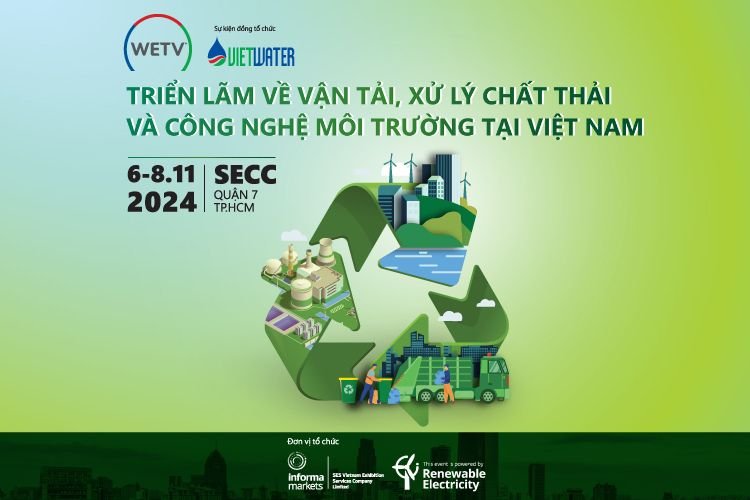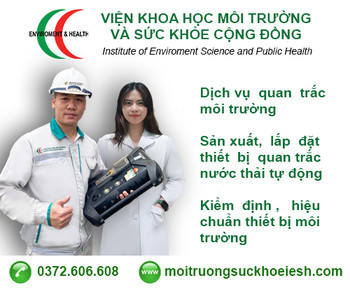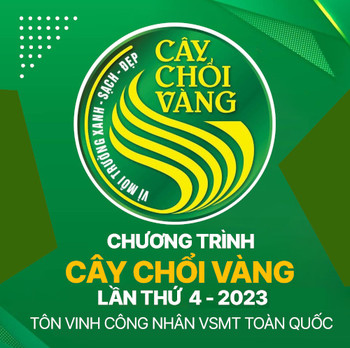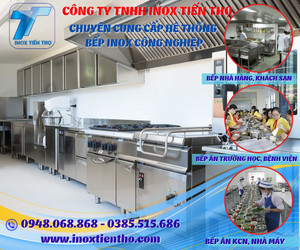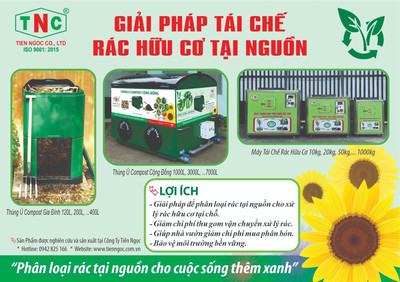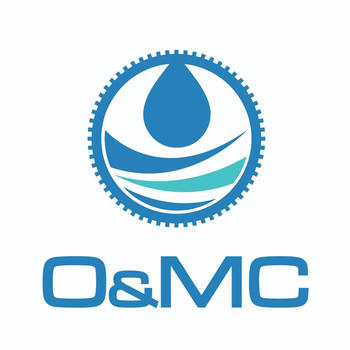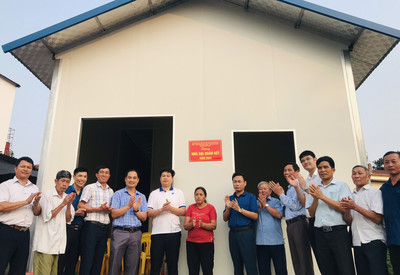Công bố quốc tế lĩnh vực môi trường số 11-2023
Trân trọng giới thiệu tới quý độc giả Công bố quốc tế lĩnh vực môi trường số 11-2023 với những nội dung chính như sau:
Về quản lý môi trường
- Sự thay đổi theo thời gian thực về mức độ phong phú của vi hạt nhựa và đặc điểm của dòng chảy bề mặt đô thị và tràn cống trong thời tiết ẩm ướt do bị ảnh hưởng bởi các yếu tố sử dụng đất và bão
- Xu hướng không gian thời gian và tác động của việc phong tỏa do đại dịch Covid-19 đối với tám chất gây ô nhiễm nước thải ở Brisbane, Australia, từ năm 2012 đến năm 2020
- Phát triển kinh tế xã hội làm thay đổi tác động của 'xanh' và 'ngũ cốc' đối với sự thoát hơi nước ở cao nguyên hoàng thổ của Trung Quốc sau chương trình ngũ cốc cho chương trình xanh
- Sự thay đổi về số lượng và chất lượng của polyme sinh học trong lò phản ứng sinh học màng quy mô thí điểm xử lý nước thải đô thị trong suốt 3 năm hoạt động
- Mô hình hóa và tối ưu hóa một nhà máy xử lý nước thải đô thị thực tế: So sánh các phương pháp tối ưu hóa đa mục tiêu đa dạng
- Ước tính tác động đối với tình trạng khan hiếm nước do sản xuất, thương mại và tiêu thụ cà phê trên toàn thế giới và trọng tâm là EU
- Đánh giá sở thích và sự phụ thuộc vào không gian của hệ thống quản lý chất thải rắn ở Nepal: Phương pháp thử nghiệm lựa chọn
- Xu hướng dài hạn về nguy cơ tử vong liên quan đến việc tiếp xúc ngắn hạn với ô nhiễm không khí ở 10 thành phố của Nhật Bản từ năm 1977 đến 2015
- Nghiên cứu chiến lược giảm thiểu rủi ro kinh tế xã hội và rủi ro lũ lụt do biến đổi khí hậu và đô thị hóa ở quy mô thành phố
Về môi trường đô thị
- Đánh giá đồng thời các benzotriazole, benzothiazole và benzenesulfonamide trong các mẫu nước từ Hệ thống đầm phá Jacarepaguá đô thị bị ảnh hưởng (Rio de Janeiro, Brazil) bằng phương pháp sắc ký lỏng kết hợp với phép đo khối phổ song song phun điện tử
- Ảnh hưởng theo mùa đến chỉ số ô nhiễm và rủi ro của nhiều thành phần hạt vi nhựa trong sông đô thị
- Sự thay đổi theo thời gian thực về mức độ phong phú của vi hạt nhựa và đặc điểm của dòng chảy bề mặt đô thị và tràn cống trong thời tiết ẩm ướt do bị ảnh hưởng bởi các yếu tố sử dụng đất và bão
- Đô thị hóa làm giảm sự phong phú của các loài và tăng sự phong phú ở vùng khí hậu khô trong khi giảm ở vùng khí hậu ẩm ướt: Một phân tích tổng hợp toàn cầu
- Sự xuất hiện của các chất ô nhiễm gây lo ngại mới nổi ở sông Eerste, Nam Phi: Hướng tới việc tối ưu hóa phương pháp tiếp cận lập hồ sơ nước đô thị để mô tả đặc điểm rủi ro sức khỏe cộng đồng và sinh thái
- Thủ thuật và đường lối trong quản lý chất thải, đặc biệt tập trung vào nước rỉ rác từ bãi chôn lấp đô thị: Dẫn đầu và trở ngại
- Các vùng đất ngập nước được xây dựng để xử lý các chất vi ô nhiễm hữu cơ hộ gia đình với hành vi suy thoái tương phản: Các hệ thống bão hòa một phần như một công cụ toàn diện về hiệu suất
- Nghiên cứu tăng cường sản xuất H2 từ quá trình khí hóa chất thải rắn đô thị thông qua mạng lưới thần kinh nhân tạo với dữ liệu về các hợp chất hắc ín
- Một phương pháp điều hòa hoàn toàn hữu cơ để đạt được quá trình khử nước sâu của bùn hoạt tính thải và cơ chế cơ bản
- Sự thích ứng ngắn hạn của các hệ thống thần kinh tự trị (ANS) theo loại môi trường đô thị và dân tộc
Về môi trường khu công nghiệp
- Chất thải công nghiệp thực phẩm - Cơ hội sản xuất đạm ấu trùng ruồi lính đen ở Tanzania
- Tác động của con người đối với ô nhiễm kim loại nặng trong đất ở các hệ sinh thái ven sông phía bắc Algeria
- Sử dụng các chất bổ sung axit propionic để tăng cường loại bỏ kẽm khỏi hệ thống thoát nước của mỏ trong thời gian lưu trú ngắn, các lò phản ứng sinh học khử sunfat chảy qua
- Xử lý nước thải và nước rỉ rác kỵ khí–hiếu khí: Đánh giá về tích hợp quy trình, thiết kế hệ thống, hiệu suất và doanh thu năng lượng liên quan
- Đánh giá hiệu suất xử lý và tiềm năng tái sử dụng trong nông nghiệp của nước thải khu công nghiệp có tổ chức (OIZ) thông qua phương pháp lọc vermi tiên tiến
- Ô nhiễm không khí xung quanh và nguy cơ mắc các bệnh về thần kinh ở các khu dân cư gần các khu liên hợp công nghiệp đa năng của Hàn Quốc: Nghiên cứu đoàn hệ dựa trên dân số
- Năng suất lũy tiến của các khối nano niken cobantit để sử dụng ánh sáng khả kiến và các hoạt động phân hủy chất gây ô nhiễm thuốc nhuộm da cam metyl
- Sẵn sàng cộng sinh: Các yếu tố cản trở việc thực hiện cộng sinh công nghiệp
- Đổi mới hệ sinh thái công nghiệp theo hướng tuần hoàn để đạt được lợi ích của việc tái sử dụng - Học hỏi từ xây dựng tuần hoàn
- Cơ chế dẫn dắt nền kinh tế số dựa trên thuật toán điều tiết để phát triển các ngành công nghiệp carbon thấp
Xin trân trọng giới thiệu!
QUẢN LÝ MÔI TRƯỜNG
1. Real-time variabilities in microplastic abundance and characteristics of urban surface runoff and sewer overflow in wet weather as impacted by land use and storm factors
Science of The Total Environment, Volume 859, Part 2, 10 February 2023, 160148
Abstract
Urban surface runoff (USR) and drainage system overflows during wet weather (WWF) play a key role in shaping water pollution. Particularly, the impact of large amounts of microplastic pollution on urban water bodies is unclear. We conducted an in-field investigation in six central urban drainage systems along Suzhou Creek in the Shanghai megacity of China and identified the impacts of storm factors and land use on the real-time dynamic changes in microplastic abundance and characteristics in USR and WWF. Microplastic abundances ranged from 228.3 ± 105.4–4969.51 ± 348.8, 309.3 ± 144.3–5195.8 ± 425.5, and 130.0 ± 30.0–8500.0 ± 1241.0 particles/L in the traffic and residential catchment USR, and the WWF, respectively. Under similar storm factor conditions, we observed correlations between environmental factors and microplastic abundance, especially the polymer type, verifying the significant role of land use. The microplastic abundance were 90.2 particles/L higher in the traffic catchment USR than in the residential catchment USR. Notably, we found unique microplastic polymers comprising ethylene vinyl acetate copolymer and thermoplastic elastomers in the residential and traffic catchment USR, respectively. However, land use had a minimum impact on the size and shape of microplastics: small-sized and film microplastics dominated in both USR types. We found statistical evidence of the widespread correlations between microplastic abundance and storm factors (accumulated storm depth and WWF flow) in both USR and WWF. The first flush phenomenon of microplastic dynamics was found in both USR and WWF. Microplastic characteristics also changed dynamically with storm time. With heavy storm factors, polypropylene and small-sized (<1 mm) microplastics in USR events increased and then decreased. This was also true for WWF events in granular and polyethylene terephthalate microplastics. Our results can facilitate the targeted mitigation of emerging pollutants to enhance stormwater management strategies and prevent future contamination.
2. Spatiotemporal trends and impact of Covid-19 lockdown on eight sewage contaminants in Brisbane, Australia, from 2012 to 2020
Chemosphere, Volume 314, February 2023, 137702
Abstract
This study aims to investigate the spatiotemporal trends and impact of COVID-19 lockdowns to the profile of physiochemical parameters in the influent of wastewater treatment plants (WWTPs) around Brisbane, Australia. One 24-hr composite influent sample was collected from 10 WWTPs and analyzed for a range of physiochemical parameters per week (i.e., chemical oxygen demand (COD), total organic carbon (TOC), total nitrogen (TN), total phosphorus (TP), ammonia, volatile suspended solid (VSS)) and per month (i.e., Ni and Cr) from 2012 to 2020, including the period of COVID-19 lockdowns in the region. The catchments studied were urban, with a mix of domestic and industrial activities contributing towards the contaminant profile. Statistical analysis identified that industrial and commercial land use, as well as population size had a large impact to the parameter loads and profile. Per capita mass loads of Cr in one catchment were 100 times higher than in others from one industrial point source. TP demonstrated a potential monotonic decrease over time due to practical reduction policies that have been implemented for phosphorous content in household detergents, except for one catchment where trade waste from food manufacturing industries contributed to an overall increase of 6.9%/year TP. The COVID-19 lockdown (March–April 2020) posed different impact on different catchments, either decrease (7–61%) or increase (2–40%) of most parameter loads (e.g., COD, TOC, TN, TP, VSS, Ammonia), which was likely driven by catchment characteristics (i.e., the proportion of residential, commercial, and industrial land uses). This study enhances our understanding of spatiotemporal trend of contaminants in the catchments for further effective source control.
3. Socioeconomic development alters the effects of ‘green’ and ‘grain’ on evapotranspiration in China's loess plateau after the grain for green programme
Journal of Environmental Management, Volume 328, 15 February 2023, 117013
Abstract
Revegetation has been conducted extensively to restore degraded ecosystems, thereby accelerating water consumption and affecting water availability for other human demands. Examining evapotranspiration (ET) can guide regional management to promote revegetation sustainability and address the contradiction in water demand. We characterised ET variation on China's Loess Plateau from 2003 to 2013, after the ‘Grain for Green’ revegetation programme implementation. Annual ET significantly increased, with an average trend of 4.87 mm yr−2; the highest increasing trends were in the southern part of the plateau. Combining zero-order correlation and partial correlation, we found that climate and crop production were the key factors influencing ET, while revegetation also had significant effects. We also explored how multiple influencing factors affected ET through partial least-squares path modelling. Revegetation and socioeconomic development were found to impose indirect effects on ET by promoting rural household income and altering agricultural production. The specified linkages and regulating pathways among revegetation and human needs including socioeconomic development and agricultural production should be considered in solving the conflicts between the ecosystem and human water use in water-limited regions.
4. Quantitative and qualitative variations of biopolymers in a pilot-scale membrane bioreactor treating municipal wastewater throughout 3 years of operation
Journal of Environmental Management, Volume 328, 15 February 2023, 116863
Abstract
In this study, the fouling potential of mixed liquor suspension samples collected from a pilot-scale membrane bioreactor (MBR) that treated municipal wastewater was monitored for more than 3 years. The fouling potential was assessed by batch filtration experiments using the same type of membrane as equipped in the MBR. The fouling potential increased when the temperature of the mixed liquor suspension in the MBR decreased. However, the polysaccharide and protein concentrations in the mixed liquor suspension, which have been focused on many previous studies, did not correlate with the fouling potential (R2 = 0.15 and 0.39, respectively). In contrast, the concentration of biopolymers, quantified by liquid chromatography–organic carbon detection (LC-OCD), exhibited a marked correlation with the fouling potential (R2 = 0.89). A high concentration of biopolymers with large molecular weight (>1 million Da) was likely responsible for the high fouling potential. Fourier transform infrared (FTIR) analysis of the dissolved organic matter in the mixed liquor suspension indicated that the chemical properties of the biopolymers considerably varied with the seasonal temperature variation, which has rarely been reported and gives insights into fouling in MBRs. The effect of temperature on the biopolymer concentration and molecular weight of biopolymers was also investigated in a separate bench-scale experiment in which temperature was controlled. It was clearly shown that a low temperature induced an increase in the biopolymer concentration and an associated increase in the fouling potential of the mixed liquor suspension.
5. Modeling and optimizing of an actual municipal sewage plant: A comparison of diverse multi-objective optimization methods
Journal of Environmental Management, Volume 328, 15 February 2023, 116924
Abstract
The activated sludge process of an actual municipal sewage treatment plant was systematically modeled, calibrated, and verified in this study. Identified multi-objective optimization (MOO) methods were employed to optimize the process parameters of the validated model, and the optimal MOO algorithm was obtained by comparing Pareto solution sets. The optimization model consisted of three key evaluation indicators (objective functions), which are the average effluent quality (AEQ), overall cost index (OCI), and total volume (TV) of the biochemical tank, along with 12 more process parameters (decision variables). Three optimization algorithms, i.e., adaptive non-dominated sorting genetic algorithm III (ANSGA-III), non-dominated sorting genetic algorithm II (NSGA-II), and particle swarm algorithm (PSO), were adopted using MATLAB. The comparison of these algorithms demonstrated that the ANSGA-III algorithm had better Pareto solution sets under the triple objective optimization, and the effluent quality of COD, TN, NH4+-N, and TP after optimization decreased by 2.22, 0.47, 0.13, and 0.02 mg/L, respectively. Additionally, the simulated AEQ was reduced by 13% compared to the original effluent, and the OCI and TV decreased from 21,023 kWh d−1 and 17,065 m3 to 20,226 kWh d−1 and 16,530 m3, respectively. The reported ANSGA-III algorithm and the proposed multi-objective method have a promising ability for energy conservation, emission reduction, and upgrading of municipal sewage treatment plants.
6. Estimating the impact on water scarcity due to coffee production, trade, and consumption worldwide and a focus on EU
Journal of Environmental Management, Volume 327, 1 February 2023, 116881
Abstract
Coffee consumption is concentrated in the "Global North”, while production is mainly located in the "Global South”. This trade-driven dependency leads to the exploitation of natural resources. As an export-oriented cash crop, such dependency jeopardizes the existence of a fair distribution of the risks and revenues among all the actors taking part in its globalized supply chain. Coffee trees are mainly rain-fed and only partly irrigated. However, the increasing global coffee demand led to higher consumption of freshwater, which can exacerbate the stressed condition of already stressed water basins. This study quantifies the impact of global coffee consumption on water scarcity, considering the larger system made of producer and consumer countries. The global displacement of such impact is driven by consumer preferences. We found that the US, EU and Asian countries’ coffee consumption create impact on water scarcity mostly in African and South American countries, which is also representative of the economic disparities existing behind the global trade flows. Climate change will likely affect the varieties currently preferred by global consumers. Therefore, immediate environmental sustainability actions including water resource preservation are necessary to face current and future challenges.
7. Assessing the preference and spatial dependence of a solid waste management system in Nepal: A choice experiment approach
Journal of Environmental Management, Volume 327, 1 February 2023, 116805
Abstract
This study deploys a choice experiment method to estimate the preference and willingness to pay for a better solid waste management system in Siddharthanagar municipality in Nepal. A primary survey of 611 households was conducted, and the results from the Generalized Multinomial Logit Model (GMNL) indicate a public preference for a better waste management service. Significant heterogeneity in household preferences is evident after accommodating each choice selection's preference certainty in the GMNL model. On average, households prefer to pay the highest amount for constructing and maintaining a sanitary landfill, which is Nepalese Rupee (NPR) 158/month (USD 1.43). The geographic distribution of the marginal willingness to pay (MWTP) by hot spot analysis from the geocoded location also indicates spatial heterogeneity across the study area. The MWTP for each waste management attribute is spatially autocorrelated, and household awareness and attitude significantly impact this spatial dependence. Overall, both the choice models result and spatial analyses indicate the policy should be targeted at a l
8. Long-term trends in mortality risk associated with short-term exposure to air pollution in 10 Japanese cities between 1977 and 2015
Environmental Research, Volume 219, 15 February 2023, 115108
Abstract
Background and aim
Short-term associations between air pollution and mortality have been well reported in Japan, but the historical changes in mortality risk remain unknown. We examined temporal changes in the mortality risks associated with short-term exposure to four criteria air pollutants in selected Japanese cities.
Methods
We collected daily mortality data for non-accidental causes (n = 5,748,206), cardiovascular (n = 1,938,743) and respiratory diseases (n = 777,266), and air pollutants (sulfur dioxide [SO2], nitrogen dioxide [NO2], suspended particulate matter [SPM], and oxidants [Ox]) in 10 cities from 1977 to 2015. We performed two-stage analysis with 5-year stratification to estimate the relative risk (RR) of mortality per 10-unit increase in the 2-day moving average of air pollutant concentrations. In the first stage, city-specific associations were assessed using a quasi-Poisson generalized linear regression model. In the second stage, city-specific estimates were pooled using a random-effects meta-analysis. Linear trend and ratio of relative risks (RRR) were computed to examine temporal changes.
Results
When stratifying the analysis by every 5 years, average concentrations in each sub-period decreased for SO2, NO2, and SPM (14.2–2.3 ppb, 29.4–17.5 ppb, 52.1–20.6 μg/m3, respectively) but increased for Ox (29.1–39.1 ppb) over the study period. We found evidence of a negative linear trend in the risk of cardiovascular mortality associated with SPM across sub-periods. However, the risks of non-accidental and respiratory mortality per 10-unit increase in SPM concentration were significantly higher in the most recent period than in the earliest period. Other gaseous pollutants did not show such temporal risk change. The risks posed by these pollutants were slightly to moderately heterogeneous in the different cities.
Conclusions
The mortality risks associated with short-term exposure to SPM changed, with different trends by cause of death, in 10 cities over 39 years whereas the risks for other gaseous pollutants were relatively stable.
9. Investigating flood exposure induced socioeconomic risk and mitigation strategy under climate change and urbanization at a city scale
Journal of Cleaner Production, Volume 387, 10 February 2023, 135929
Abstract
Investigating future flood exposure risk and associated mitigation strategies is vital for sustainable urban development. This study coupled hydrological modeling with future climate and urbanization scenarios from Representative Concentration Pathways and Shared Socioeconomic Pathways (SSP), to spatiotemporally investigate the risk of flood exposure and the effectiveness of mitigation strategy at the city scale. A highly urbanized (80% of built-up areas) and densely populated (7500 per km2) region in downtown Chaohu, China was selected as the study case. Results showed that the current hydrological pattern brought 4.64 × 106 m3 of annual runoff and 292.00 l s−1 of peak flow to the given area, thereby causing 41.03% of the population to be exposed to flooding threats and putting 51.17% of Gross Domestic Product (GDP) at risk. Scenario analysis demonstrated that population and GDP exposures to flood increased to at most 61.11 and 71.30% in high-carbon emission scenarios (SSP3-7.0/SSP5-8.5), respectively. The green infrastructure (GI) strategy captured at most 81.43% of runoff volume and 54.53% of peak flow, thereby decreasing population and GDP exposures to at least 18.38 and 33.04% in low-carbon emission scenarios (SSP1-2.6/SSP2-4.5), respectively. According to the uncertainty analysis, population and GDP exposures showed wide uncertainty ranges of 18.38–61.11 and 33.04–71.30% in future scenarios, and the GI strategy effectively decreased the flood exposure uncertainty ranges to 15.56–42.70 and 17.35–43.60%, respectively. In addition, the spatial analysis indicated that the population- and GDP- intensive regions were more vulnerable to flood exposure than other regions, while GI strategy in these regions showed limited effectiveness in mitigation of exposure risk. The data of this study could assist sustainable urban development in response to climate change and urbanization.
10. Environmental assessment of multiple "cleaner electricity mix” scenarios within just energy and circular economy transitions, in Italy and Europe
Journal of Cleaner Production, Volume 388, 15 February 2023, 135891
Abstract
The current European context, affected by the dramatic conflict between Russia and Ukraine and the related energy and food shortages, is putting a strain on the natural gas availability of the European member states. The latter are forced to new negotiations with other potential energy suppliers, to urgent internal measures to reduce energy demand and, at the same time, to fulfil their commitments to internationally agreed climate targets, where the energy transition is a key strategy. A sustainable energy transition strategy is also essential in circular economy implementation (CE), requiring the replacement of fossil energies with renewable ones. In turn, the energy transition should meet the CE principles to reduce the consumption of natural resources and the contribution to climate change. In this context, this study assesses the environmental impacts of the Italian and EU electricity mixes under different governmental and research scenarios and perspectives, by means of the Life Cycle Assessment approach (Midpoint and Endpoint LCA). Results show that the shift from the BAU electricity mix (year 2021) to the emergency Government plan scenario (2021–2023) replacing 14% of Russian natural gas by means of 42% oil and coal and 58% renewables slightly reduces the contribution to Midpoint LCA impact indicators, including global warming and fossil resource scarcity, while still contributing to particulate matter formation, terrestrial acidification, eco-toxicity and water consumption. The contribution to global warming further decreases in the other modelled scenarios, where natural gas is assumed to decrease from 30% to a high 60% in favour of renewables (Governmental plan 2030 scenario). Other impacts, in particular terrestrial and human toxicity, are instead expected to worsen, calling for much needed improvement of renewable technologies. Further, the Endpoint LCA impact indicators, expressed as DALY (human health damage), lost species potential (biodiversity damage) and increased costs for the extraction of mineral and fossil resources, improve in the Governmental Plan 2030 scenario and other modelled options. LCA shows to be a key method for the energy transition, in order to identify hotspots of modelled electricity scenarios and suggest more environmentally, circular and socially just improvement solutions. The adoption of the concept of CE in energy transition entails the expansion of the boundaries of an LCA to include the end-of-life of renewable technologies (so-called "cradle to cradle” approach) and the assessment of the most successful options to mitigate the environmental and social impacts of energy transition.
11. Environmental protection tax superseded pollution fees, does China effectively abate ecological footprints?
Journal of Cleaner Production, Volume 388, 15 February 2023, 135846
Abstract
This paper constructs the ecological footprint accounts for 30 provinces in China, and explores the effects of environmental policies from the perspective of various ecological footprints. We innovatively focus on the impact which pollution fees superseded environmental protection tax on ecological footprints. The effects of these two environmental policies in China is compared with the panel smooth transition regression model (PSTR). In comparison with pollution fees, environmental protection tax has a stronger inhibition on ecological footprints. Pollution fees can lessen the cropland's ecological footprint, but this negative effect presents marginal diminishing. As for the ecological footprints of fishing grounds and fossil energy land, when pollution fees exceed 2.002 and 2.011 (‱ of GDP) respectively, there will be a restraining effect. Pollution fees has no effect on reducing the ecological footprints of grazing land, forest land, infrastructure, and the total. The environmental protection tax has a negative impact of linearity on the ecological footprints of fishing grounds and forest land. When environmental protection tax exceeds the corresponding thresholds (1.226, 3.482, 1.867 and 3.083), it will decrease the ecological footprints of grazing land, infrastructure, fossil energy land, and the total. The negative effect of environmental protection tax on cropland's ecological footprint is not obvious. Further, the change charts of influence coefficient on ecological footprints are drawn to directly reflect the optimal tax range for environmental protection tax to diminish ecological footprints. The heterogeneity analysis reveal that the current environmental protection tax only inhibits the total ecological footprint of eight provinces, mostly in northern China. These conclusions have reference significance for the government to adjust the appropriate environmental protection tax rate.
12. The potency of resource efficiency and environmental technologies in carbon neutrality target for Finland
Journal of Cleaner Production, Volume 389, 20 February 2023, 136127
Abstract
Motivated by Finland's ambitious transition to circular economy through the reduction of consumable non-renewable resources and carbon neutral 2035, this study employs the Fourier approaches of stationarity, cointegration, causality alongside the long-run estimators of fully modified and dynamic least squares to examine the environmental aspects of resource productivity, environmental-related technologies, and export intensity over the period 1990–2020. Interestingly, given the two long-run estimators, the result established that a percent increase in raw material productivity yields a decline in greenhouse gas emission by a range of 61–70 percent. Additionally, there is a desirable and statistically significant impact of environmental-related technologies on greenhouse gas emission with an elasticity range of 0.16–0.18 in the long-run. While the intensity of export activities does not constitute a significant impact, economic growth as measured by Gross Domestic product (GDP) significantly hampers environmental sustainability in the long-run. Moreover, the causality approach including the Fourier Toda Yamamoto offers a strong inference along the insinuation of the long-run results for all the examined factors. Given this observation, relevant policy measures were highlighted to further guide decision makers in Finland on the pursuit of circular economy and carbon zero target.
13. The "golden” voice of "green” employees: The effect of private environmental orientation on suggestions for improvement in firms’ economic value creation
Journal of Business Research, Volume 156, February 2023, 113492
Abstract
This study examines whether employees’ private environmental orientation matters for the economic performance of their firms. It argues that employees’ private environmental orientation affects not only their pro-environmental and pro-social behavior (PEPSB) in the workplace but also their inclination to make suggestions for improvements (i.e., their voice behavior). It also contends that their voice behavior is not limited to suggestions rooted in PEPSB but includes suggestions for other economically attractive improvements besides pro-environmental and pro-social improvements. This study further maintains that firms can support the transformation of employees’ private environmental orientation into voice behavior at work by influencing employees’ perception of the firm. Specifically, it posits that an employee’s private environmental orientation leads to more suggestions for economically attractive improvements at work, the more she or he perceives the company to emphasize sustainability. An analysis of 283 employees in the hospitality industry provides strong support for our theoretical account.
14. The impact of environmental uncertainty on ESG performance: Emotional vs. rational
Journal of Cleaner Production, Available online 24 February 2023, 136528
Abstract
This study analyzes the direct impact of environmental uncertainty on environmental, social, and governance (ESG) performance, while verifying the existence of a mediating path from an "emotional” and "rational” perspective. In addition, a three-dimensional heterogeneity analysis framework of "company-market-government” is established to explore the similarities and differences in the relationship between the two in different scenarios. The study finds that: (1) Environmental uncertainty reduces the ESG performance, and the conclusion remains valid after a series of robustness tests; (2) There is a mediating path between investor sentiment (i.e., "emotional”) and green innovation (i.e., "rational”) in the dampening effect of environmental uncertainty on corporate ESG performance, and green innovation has a masking effect on the direct impact; (3) In further analysis, the dampening effect of environmental uncertainty on ESG performance is more pronounced among companies in the "mature” stage and "small market, big government”. Facing the background of environmental uncertainty, this study enriches the mechanism of improving the corporate ESG performance, which is of practical significance to companies, markets, governments and other stakeholders.
15. Internationalization, institutional pressures in foreign markets, and environmental sustainability
Journal of International Management, Volume 29, Issue 1, February 2023, 100974
Abstract
This study contributes to the internationalization processes and sustainability literatures by looking into how, when, and why companies respond differently to formal and informal institutional pressures in favor of environmentally friendly practices during international expansion processes. When companies enter new foreign markets or expand their sales into existing ones they can be subject to increased formal and informal pressures. I show, theoretically and empirically, that in these cases the informal pressures' tacit and experiential nature affects the timing and the likelihood of compliance with these pressures. First, compliance with informal pressures takes longer than for formal ones. Second, companies that cannot afford learning about informal pressures, because of resource constraints or a limited learning efficiency due to a narrow previous international experience, tend to forgo compliance with these pressures. Failure to comply with these pressures or to do so in a timely manner can have devastating consequences for internationalizing companies' legitimacy.
16. Does family matter? Ownership, motives and firms’ environmental strategy
Long Range Planning, Volume 56, Issue 1, February 2023, 102216
Abstract
Extant research has primarily focused on the economic drivers and outcomes of corporate environmental performance. This trajectory oversimplifies the motives for environmental strategies across all firm types and particularly overlooks how firm ownership presents other motives for environmental strategies. In this study, we leverage institutional theory to examine how family motives, underpinned by family members' desire to gain or preserve family legitimacy and socio-emotional wealth, affect ISO 14001 certification. Using firm-level data, we find that family ownership has a positive effect on ISO 14001 certification. This effect is stronger for firms whose names include the family name and also for firms located closer to large cities. Our study contributes to nonmarket strategy literature by showing that family motives underpin firms’ environmental initiatives. It also contributes to institutional theory by delineating the levels of legitimacy that spur nonmarket strategy in family firms.
MÔI TRƯỜNG ĐÔ THỊ
1. Simultaneous evaluation of benzotriazoles, benzothiazoles and benzenesulfonamides in water samples from the impacted urban Jacarepaguá Lagoon System (Rio de Janeiro, Brazil) by liquid chromatography coupled to electrospray tandem mass spectrometry
Science of The Total Environment, Volume 858, Part 3, 1 February 2023, 160033
Abstract
Benzotriazoles, benzothiazoles, and benzenesulfonamides are emerging pollutants stable in aquatic media emitted by anthropogenic sources. Selected compounds of these classes were evaluated in the impacted urban Jacarepaguá Lagoon System (JLS) located in a tropical coastal region of Rio de Janeiro City, Brazil that has experienced a rapid expansion of urban occupation and environmental degradation in recent decades, and it represents a pioneering study of these compounds carried out in Brazilian areas. A method of solid phase extraction followed by ultra-performance liquid chromatography coupled to electrospray tandem mass-spectrometry was implemented to evaluate water samples collected in different water bodies (rivers, lagoons, and channels) of the JLS from March 2017 to May 2018. Limits of quantification (LOQs) ≤ 10.0 ng L−1, method linearity up to 1000 μg L−1, and recoveries between 62 and 121 % at three different levels were obtained. Individual concentrations varied from < LOQ to 5260 ng L−1 (benzotriazole, in May 2018) which also predominated in all river samples. 2-mercaptobenzothiazole predominated in samples taken in lagoons and channels in March 2017, and 2-aminobenzothiazole was never detected. River samples showed total concentrations up to 30 times larger in all sampling campaigns, except March 2017 when the sample taken at Tijuca Lagoon showed the largest total concentration of the compounds studied due to the largest concentration of 2-mercaptobenzothiazole (2505 ng L−1) found in this study. Principal component analysis (PCA) using only composition data was unable to distinguish samples from rivers, and lagoons and channels, but a PCA combining composition data and environmental parameters (pH, Eh, dissolved O2 concentration, temperature, salinity, and conductivity) discriminated the samples according to two groups: rivers and lagoons and channels. The Joá Channel flows directly to the open sea and our data allowed a (preliminary) estimation of the total mass flows of the studied compounds to the open sea, which would vary between 1702 g day−1 (March 2017) to 106 g day−1 (May 2018) and allowed a preliminary estimative based on the geometric mean of input of 87.9 kg year−1, indicating the importance of the drainage area to the contamination of the coastal area, and consequently to ocean pollution.
2. Seasonal influence on pollution index and risk of multiple compositions of microplastics in an urban river
Science of The Total Environment, Volume 859, Part 1, 10 February 2023, 160021
Abstract
Emerging contaminant microplastics (MPs) are getting worldwide attention for their ubiquitous occurrence and potential risk to the environment. However, the seasonal influence on freshwater MP pollution remains poorly understood. To better understand and evaluate the riverine MPs in different seasons, this study conducted the risk assessment of MPs in an urban river, Houjin River, during the different seasons. The present study found that the MPs (0.1–5 mm, mostly 0.1–2 mm) were more abundant in the dry season (183.33 ± 128.95 items/m3) compared with the wet season (102.08 ± 45.80 items/m3). Similarly, the mixture of different MPs polymers was more diverse in the dry season. The related pollution indices such as the contamination factor (CF) and pollution load index (PLI) showed that average CF and PLI were 5.15 and 2.10 in the dry season, which significantly decreased to 1.58 and 1.25, respectively, in the wet season (p < 0.05). Additionally, significant difference of the average risk quotient (RQ) was observed, which was 0.037 in the dry season and 0.021 in the wet season (p < 0.05). To sum up, the results of this study indicate the seasonal effects on the pollution and risk of multiple compositions of MPs in the urban river, suggesting higher impacts of riverine MPs pollution in the dry season, as well as the potential increase of MPs, may lead to environmental risk in the future.
3. Real-time variabilities in microplastic abundance and characteristics of urban surface runoff and sewer overflow in wet weather as impacted by land use and storm factors
Science of The Total Environment, Volume 859, Part 2, 10 February 2023, 160148
Abstract
Urban surface runoff (USR) and drainage system overflows during wet weather (WWF) play a key role in shaping water pollution. Particularly, the impact of large amounts of microplastic pollution on urban water bodies is unclear. We conducted an in-field investigation in six central urban drainage systems along Suzhou Creek in the Shanghai megacity of China and identified the impacts of storm factors and land use on the real-time dynamic changes in microplastic abundance and characteristics in USR and WWF. Microplastic abundances ranged from 228.3 ± 105.4–4969.51 ± 348.8, 309.3 ± 144.3–5195.8 ± 425.5, and 130.0 ± 30.0–8500.0 ± 1241.0 particles/L in the traffic and residential catchment USR, and the WWF, respectively. Under similar storm factor conditions, we observed correlations between environmental factors and microplastic abundance, especially the polymer type, verifying the significant role of land use. The microplastic abundance were 90.2 particles/L higher in the traffic catchment USR than in the residential catchment USR. Notably, we found unique microplastic polymers comprising ethylene vinyl acetate copolymer and thermoplastic elastomers in the residential and traffic catchment USR, respectively. However, land use had a minimum impact on the size and shape of microplastics: small-sized and film microplastics dominated in both USR types. We found statistical evidence of the widespread correlations between microplastic abundance and storm factors (accumulated storm depth and WWF flow) in both USR and WWF. The first flush phenomenon of microplastic dynamics was found in both USR and WWF. Microplastic characteristics also changed dynamically with storm time. With heavy storm factors, polypropylene and small-sized (<1 mm) microplastics in USR events increased and then decreased. This was also true for WWF events in granular and polyethylene terephthalate microplastics. Our results can facilitate the targeted mitigation of emerging pollutants to enhance stormwater management strategies and prevent future contamination.
4. Urbanization decreases species richness, and increases abundance in dry climates whereas decreases in wet climates: A global meta-analysis
Science of The Total Environment, Volume 859, Part 1, 10 February 2023, 160145
Abstract
Soil invertebrates have an essential role in decomposition, nutrient turnover and soil structure formation, all of which are strongly threatened by urbanization. Sealing, compaction by trampling and pollution destroy and degrade city soils and potentially damage soil-living invertebrates. The existing literature on how urbanization affects soil invertebrates is inconsistent, presenting both negative and positive effects. Therefore, here we aimed to synthesize the effects of urbanization on soil invertebrates considering their taxonomic (Acari, Annelida, Carabidae, Collembola, Gastropoda, Isopoda, Myriapoda, Nematoda) and functional (soil living vs. soil-related; mobility) identities, as well as to examine how the overall effect is modulated by climatic conditions (total annual precipitation, annual mean ambient temperature), urban heat island effect (based on ambient temperature differences between urban and rural areas) and city population. In a systematic review using hierarchical and categorical meta-analyses, we extracted 158 effect sizes from 75 studies on abundance and 125 effect sizes from 84 studies on species richness. Invertebrate abundance showed an increase (r = 0.085), whereas species richness significantly decreased with increasing urbanization (r = −0.168). The reason behind this could be that a few generalist species can adapt well to the urban environment and achieve strongly elevated densities. The species richness of annelids (r = −0.301), springtails (r = −0.579), and snails (r = −0.233) decreased with advancing urbanization, most probably because these animals are sensitive to soil compaction and pollution, both of which are common consequences of urbanization. The temperature did not modify the effects of urbanization, but precipitation modified the effects on abundance (r = −0.457). Abundance increased with advancing urbanization in drier climates, probably because irrigation increased soil moisture, whereas it decreased in wet climates, as urban areas were drier than their surroundings. Making future cities more climate-neutral could better sustain soil biodiversity.
5. Occurrence of contaminants of emerging concern in the Eerste River, South Africa: Towards the optimisation of an urban water profiling approach for public- and ecological health risk characterisation
Science of The Total Environment, Volume 859, Part 1, 10 February 2023, 160254
Abstract
The study evaluated the presence and fate of various contaminants of emerging concern (CECs) from a South African wastewater treatment works (WWTW) and surface waters located around an urban setting. A total of 45 CECs were quantified from nine sampling locations over an 11-month period. Daily loads (g/day) of the target analytes in the WWTW showed persistence of some CECs, along with population-normalised daily loads (mg/day/1000inh) of pharmaceuticals and drugs of abuse (DOA) that were estimated for the first time in the study area. Multiple chemical markers were recorded in river water located upstream of the WWTW discharge throughout the study period, suggesting a high degree of diffuse pollution from urban communities in the study area that are not connected to sewage networks or where sanitation services are limited. The potential of using defined surface water locations to perform community-wide substance use profiling for non-sewered communities was also explored. Environmental risk characterisation for the WWTW effluent and surface waters throughout the study period provided multiple risk quotients (RQ) for the target list of CECs spanning over various sentinel trophic levels. High risk profiles (RQ > 1.0) with a frequency of exceedance (FoE) larger than 75 % were recorded for several CECs in both WWTW effluent and surface water locations that suggest potential long-term ecological health risk impacts of pollution hotspot areas in the river catchment situated around the urban area. We present challenges in surface water quality within the study area that is relatable, or may even present more challenging, in other low- or middle-income country (LMICs) settings. The study also highlighted some challenges and limitations associated with the much-needed application of wastewater-based epidemiology (WBE) intervention in non-sewered communities that can inform on public health and communal substance use profiles of the entire urban setting.
6. Tricks and tracks in waste management with a special focus on municipal landfill leachate: Leads and obstacles
Science of The Total Environment, Volume 860, 20 February 2023, 160377
Abstract
Landfilling is the most widely used disposal method for municipal solid waste around the world. The main disadvantage of this strategy is formation of leachate, among other aspects. Landfill leachate contains highly toxic and bio-refractory substances that are detrimental to the environment and human health. Hence, the risk(s) of discharging potentially harmful landfill leachate into the environment need to be assessed and measured in order to make effective choices about landfill leachate management and treatment. In view of this, the present review aims to investigate (a) how landfill leachate is perceived as an emerging concern, and (b) the stakeholders' mid- to long-term policy priorities for implementing technological and integrative solutions to reduce the harmful effects of landfill leachate. Because traditional methods alone have been reported ineffective, and in response to emerging contaminants and stringent regulations, new effective and integrated leachate treatments have been developed. This study gives a forward-thinking of the accomplishments and challenges in landfill leachate treatment during the last decade. It also provides a comprehensive compilation of the formation and characterization of landfill leachate, the geo-environmental challenges that it raises, as well as the resource recovery and industrial linkage associated with it in order to provide an insight into its sustainable management.
7. Constructed wetlands for the treatment of household organic micropollutants with contrasting degradation behaviour: Partially-saturated systems as a performance all-rounder
Chemosphere, Volume 314, February 2023, 137645
Abstract
The degradability of specific organic micropollutants in constructed wetlands (CWs) may differ depending on the prevalence of oxic or anoxic conditions. These conditions are governed, among other factors, by the water saturation level in the system. This study investigated the removal of three environmentally-relevant organic micropollutants: bisphenol-group plasticizer bisphenol S (BPS), household-use insecticide fipronil (FPN) and non-steroidal anti-inflammatory drug ketoprofen (KTP) in the model CWs set up in an outdoor column system. BPS and KTP, in contrast to FPN, exhibit higher biodegradability potential under oxic conditions. The experimental CWs were operated under various saturation conditions: unsaturated, partially saturated and saturated, and mimicked the conditions occurring in unsaturated, partially-saturated intermittent vertical-flow CWs and in horizontal-flow CWs, respectively. The CWs were fed with synthetic household wastewater with the concentration of the micropollutants at the level of 30–45 μg/L. BPS and KTP exhibited contrasting behaviour against FPN in the CWs in the present experiment. Namely, BPS and KTP were almost completely removed in the unsaturated CWs without a considerable effect of plants, but their removal in saturated CWs was only moderate (approx. 50%). The plants had only a pronounced effect on the removal of BPS in saturated systems, in which they enhanced the removal by 46%. The removal of FPN (approx. 90%) was the highest in the saturated and partially-saturated CWs, with moderate removal (66.7%) in unsaturated systems. Noteworthy, partially-saturated CWs provided high or very high removal of all three studied substances despite their contrasting degradability under saturated and unsaturated conditions. Namely, their removal efficiencies in planted CWs were 95.9%, 94.5% and 81.6%, for BPS, KTP and FPN, respectively. The removal of the micropollutants in partially-saturated CWs was comparable or only slightly lower than in the best treatment option making it the performance all-rounder for the compounds with contrasting biodegradability properties.
8. Investigation of enhanced H2 production from municipal solid waste gasification via artificial neural network with data on tar compounds
Journal of Environmental Management, Volume 328, 15 February 2023, 117014
Abstract
An artificial neural network (ANN) is a biologically inspired computational technique that imitates the behavior and learning process of the human brain. In this study, ANN technique was applied to assess the gasification of municipal solid waste (MSW) with the aim of enhancing the H2 production. The experiments were conducted using a horizontal tube reactor under different parameters: temperatures, MSW loadings, residence times, and equivalence ratios. The input and output variables (released gases) were tested and trained using back-propagation algorithm, and the data distribution by K-fold contrivance. The values of the training (80% data) and validation (20% data) dataset were found satisfactory. The values of regression coefficient (R2) for the training phase were lied between 0.9392 and 0.9991, and 0.9363 and 0.993824 for the testing phase. Whereas; the values of root mean square error (RSME) for the training phase were lied between 0.4111 and 0.8422, and between 0.1476 and 0.7320 for the testing phase. Higher H2 production of 42.1 vol% was produced at the higher reaction temperature of 900 °C with LHV of 11.2 MJ/Nm3. According to the tar analysis, the dominant compounds were aromatics (17 compounds) followed by polycyclic aromatic, phenyl, aliphatic, aromatic heterocyclic, polycyclic, and aromatic ketone compounds.
9. An all-organic conditioning method to achieve deep dewatering of waste activated sludge and the underlying mechanism
Journal of Environmental Management, Volume 327, 1 February 2023, 116923
Abstract
Among the common treatment/disposal routes of excessive activated sludge from municipal wastewater treatment plant, dewatering process functions as an essential pre-/post-treatment for volume minimization and transportation facilitation. Since inorganic coagulants have long been criticized for their high dosage and solid residue in sludge cake, there is an urgent need for investigations regarding the potential of applying organic chemicals as the conditioner. In this study, combined use of poly dimethyldiallylammonium chloride (PDMD) and tannic acid (TA) were investigated as an all-organic co-conditioning method for sewage sludge pre-treatment. Results showed that this all-organic conditioning strategy can effectively improve the dewaterability of sewage sludge. The capillary suction time reduced from 128.8 s to 23.1 s, and the filtration resistance reduced from 1.24 × 1012 cm/g to 7.38 × 1010 cm/g. The moisture content of dewatered sludge cake decreased to as low as 55.83%, showing the highest dewatering efficiency reported so far. In addition, the combination of PDMD and TA maximized the treating efficiency with very limited consumption of conditioners (added up to 4% of total solid). Based on the physic-chemical and rheological property investigation, it was proposed that the intermediate molecular weight polymer-based flocculation process and the TA agent-based protein precipitation process, could remarkably strengthen the compactness and structure robustness of sludge. In all, this PDMD-TA-based conditioning method suggested practical significance in consideration of its cost-effectiveness and disposal convenience of sludge cake.
10. An all-organic conditioning method to achieve deep dewatering of waste activated sludge and the underlying mechanism
Journal of Environmental Management, Volume 327, 1 February 2023, 116923
Abstract
Among the common treatment/disposal routes of excessive activated sludge from municipal wastewater treatment plant, dewatering process functions as an essential pre-/post-treatment for volume minimization and transportation facilitation. Since inorganic coagulants have long been criticized for their high dosage and solid residue in sludge cake, there is an urgent need for investigations regarding the potential of applying organic chemicals as the conditioner. In this study, combined use of poly dimethyldiallylammonium chloride (PDMD) and tannic acid (TA) were investigated as an all-organic co-conditioning method for sewage sludge pre-treatment. Results showed that this all-organic conditioning strategy can effectively improve the dewaterability of sewage sludge. The capillary suction time reduced from 128.8 s to 23.1 s, and the filtration resistance reduced from 1.24 × 1012 cm/g to 7.38 × 1010 cm/g. The moisture content of dewatered sludge cake decreased to as low as 55.83%, showing the highest dewatering efficiency reported so far. In addition, the combination of PDMD and TA maximized the treating efficiency with very limited consumption of conditioners (added up to 4% of total solid). Based on the physic-chemical and rheological property investigation, it was proposed that the intermediate molecular weight polymer-based flocculation process and the TA agent-based protein precipitation process, could remarkably strengthen the compactness and structure robustness of sludge. In all, this PDMD-TA-based conditioning method suggested practical significance in consideration of its cost-effectiveness and disposal convenience of sludge cake.
11. The short term adaptation of the autonomic nervous systems (ANS) by type of urban environment and ethnicity
Environmental Research, Volume 218, 1 February 2023, 114929
Abstract
Background
Previous studies examined the effects of urban environments on the Autonomic Nervous System (ANS). These studies measured the effects of environments on Heart Rate Variability (HRV) averaging different time intervals to one value. Yet, the dynamics of change, reflecting the functions and their derivatives that describe the adaptation to the new environments remain unknown. In addition, ethnic differences in the ANS adaptation were not investigated.
Method: Forty-eight Arab and 24 Jewish women ages 20–35 years, all healthy, non-smokers were recruited by a snowball sample. Both groups were of a similar socioeconomic status and BMI distributions. Using a portable monitor, the HRV response was continuously analyzed for 35 min of sedentary sitting in each of the three environments: a park, a city center and a residential area. LF/HF polynomial function was adapted to describe the dynamic change in each environment for each ethnic group.
Results
Green area exposure was associated with 90% immediate change while in built-up areas, the change in HRV is about 40% adaptive (changing gradually). The adaptive process of HRV may stabilize after 15 min in the city center yet not even after 35 min in the residential environment. The total change (immediate + adaptive) reached 24% in city centers and 10% in residential areas. Changes in HRV rates in the park and the city center environments were higher among Arab women as compared to Jewish women but similar between the two groups in the residential area. The distributions of LF/HF in each time cohort were normal, meaning that shifting the focus to analyze functions of change in HRV, opens the possibility to employ analytic methods that assume the normal distribution.
Conclusions
Changing the focus from average levels of HRV to functions of change and their derivatives brings new insight into the understanding of the ANS response to environmental challenges. ANS short term adaptation to different environments is gradual and spans differently both in magnitude of response and latencies between different environments. Importantly, in green areas, the response is immediate unlike the adaptation to urban environments that is significantly more gradual. The ethnic differences in ANS adaptation is also noteworthy. In addition, adaptation proceeesses are normaly distributed in each time cohort suggesting a possible novel ANS index.
12. The responses of mesophilic and thermophilic anaerobic digestion of municipal sludge to periodic fluctuation disturbance of organic loading rate
Environmental Research, Volume 218, 1 February 2023, 114783
Abstract
Fluctuation disturbance of organic loading rate (OLR) is common in actual anaerobic digestion (AD), but its effects on AD of municipal sludge gets little attention. This study investigated the responses of reactor performance and active microbial community in mesophilic and thermophilic AD of municipal sludge before, during and after OLR periodic fluctuation disturbance. The performance of both reactors were similar before and after disturbance although some parameter values changed during the disturbance, which indicated their enough buffer capacity to OLR periodic fluctuation. Different microbial community at RNA level was observed in the two reactors. When the OLR disturbance commenced, the microbial community changed greatly in thermophilic AD. Error and attack tolerance of the microbial network was analyzed in order to learn the response mechanisms to OLR disturbance. The results assisted that the thermophilic microbial community was more vulnerable, but the reactor performance of which could be maintained using the functional redundancy strategy under OLR fluctuation disturbance.
13. Scenedesmus sp. strain SD07 cultivation in municipal wastewater for pollutant removal and production of lipid and exopolysaccharides
Environmental Research, Volume 218, 1 February 2023, 115051
Abstract
In this study, an efficient microalgal strain SD07 was isolated from pond wastewater and identified as Scenedesmus sp. using the 18S rRNA gene sequence analysis. The strain SD07 was grown in a variety of concentrations (25–100%) of municipal wastewater. Scenedesmus sp. strain SD07 grown in 75% diluted wastewater produced a higher amount of biomass (1.93 ± 0.10 g L−1), and removal of chemical oxygen demand (COD), ammonium (NH4+), total nitrogen (TN) and total phosphate (TP) by 91.36%, 88.41%, 93.26% and 96.32%, respectively from wastewater. The harvested strain SD07 biomass has protein, carbohydrate and lipid contents of 35%, 20.4% and 33%, respectively. Fatty acid profiles revealed that the strain SD07 lipids mainly consist of palmitic acid (40.5%), palmitoleic acid (19%), linoleic acid (17%) and oleic acid (13.2%). Furthermore, strain SD07 cultured in 75% diluted wastewater produced 378 mg L−1 of exopolysaccharides (EPS). The EPS was utilized as a biostimulant in the cultivation of Solanum lycopersicum under salinity stress. In summary, these findings suggest that this Scenedesmus sp. strain SD07 can be employed for wastewater treatment as well as the production of valuable biomass, high-quality algal oil and EPS.
14. Phytoremediation of nickel and zinc using Jatropha curcas and Pongamia pinnata from the soils contaminated by municipal solid wastes and paper mill wastes
Environmental Research, Volume 219, 15 February 2023, 115055
Abstract
The primary source of soil pollution is a complex mixture of numerous inorganic and organic compounds (including chlorinated compounds, nutrients, and heavy metals, etc.). The presence of all of these compounds makes remediation and cleanup difficult. In this study, the phytoremediation ability of Jatropha curcas and Pongamia pinnata was tested to remove nickel (Ni) and Zinc (Zn) from paper mill and municipal landfill contaminated soils, to understand the uptake potential and to estimate the accumulation pattern of Ni and Zn in the vegetative parts of the plant. The experiments were carried out in pots (3 kg capacity) and the different combinations of soil were made by mixing the contaminated soil with a reference soil (forest soil) as T0, T25, T50, T75 and T100. The plant biomass, chlorophyll content, proline, nitrate reductase activity and metal removal efficiency (%)were determined after 120 DAS (i.e., the days after sowing). The results of the study showed that with increasing metal stress, there is a reduction in the above-ground biomass content in both the plant species with a slightly less impact on the root biomass. Over a period of 4 months, J. curcas and P. pinnata removed 82–86% and 93-90% Ni, respectively. The removal of Zn was significantly less as compared to Ni as most of the Zn remained in the belowground part (roots) and in the soil. Besides, the phytostabilization capacities of the plants were calculated on the basis of their tolerance index (TI), bioaccumulation factor (BAF) and translocation factor (TF). The low BAF and TF values with increasing heavy metals (HMs) content indicates its higher phytostabilization capacity in the root and rhizospheric region as compared to phytoaccumulation.
15. Residential greenness and air pollution's association with nasal microbiota among asthmatic children
Environmental Research, Volume 219, 15 February 2023, 115095
Abstract
Both greenness and air pollution have widely been linked with asthma. However, the potential mechanism has rarely been investigated. This study aimed to identify the association between residential greenness and air pollution (fine particulate matter [PM2.5]; nitrogen dioxide [NO2]; ozone [O3]) with nasal microbiota among asthmatic children during the recovery phase. The normalized difference vegetation index was used to assess the extent of residential greenness. Spatiotemporal air pollution variation was estimated using an integrated hybrid kriging-LUR with the XG-Boost algorithm. These exposures were measured in 250-m intervals for four incremental buffer ranges. Nasal microbiota was collected from 47 children during the recovery phase. A generalized additive model controlled for various covariates was applied to evaluate the exposure-outcome association. The lag-time effect of greenness and air pollution related to the nasal microbiota also was examined. A significant negative association was observed between short-term exposure to air pollution and nasal bacterial diversity, as a one-unit increment in PM2.5 or O3 significantly decreased the observed species (PM2.5: −0.59, 95%CI -1.13, −0.05 and O3: −0.93, 95%CI -1.54, −0.32) and species richness (PM2.5: −0.64, 95%CI -1.25, −0.02 and O3: −0.68, 95%CI -1.43, −0.07). Considering the lag-time effect, we found a significant positive association between greenness and both the observed species and species richness. In addition, we identified a significant negative association for all pollutants with the observed species richness. These findings add to the evidence base of the links between nasal microbiota and air pollution and greenness. This study establishes a foundation for future studies of how environmental exposure plays a role in nasal microbiota, which in turn may affect the development of asthma.
16. Air pollutant emissions and reduction potentials from municipal solid waste incineration in China
Environmental Pollution, Volume 319, 15 February 2023, 121021
Abstract
China fully implemented the new emission standards in 2016 to further reduce the emissions of air pollutants from the municipal solid waste (MSW) incineration industry; however, the implementation effect of the new standards remains unknown. This study developed the first nationwide air pollutant emission inventory of MSW incineration plants in China based on the measured concentration data from China's continuous emissions monitoring systems (CEMS) network, and activity level data from the China Urban Construction Statistical Yearbook, to evaluate the effectiveness of implementing the new emission standards and estimate the future reduction potentials. Our results demonstrated that the overall standard-reaching proportions of particulate matter (PM), sulfur dioxide (SO2), nitrogen oxide (NOX), hydrogen chloride (HCl) and carbon monoxide (CO) were 98.8%, 99.3%, 99.4%, 99.4% and 97.6%, respectively, by comparing with the corresponding concentration limits of new emission standards. The total emissions of PM, SO2, NOX, HCl and CO from 412 MSW incineration plants in 2019 were 1.9, 6.2, 50.8, 4.3 and 6.6 kt yr−1, respectively, which is 33.6–75.8% lower than those in 2015, mainly due to the sharp decrease in emission factors. Pollutant emission hotspots were mainly concentrated in eastern and central and southern regions with large populations and well-developed economies. The analysis of future scenario results shows that despite the continuous increase of MSW incineration amount in the future, if the government strengthens pollutant emission standards and comprehensively implements waste sorting, total emissions and emission factors of air pollutants could be further reduced by 25.8–72.7% and 59.8–81.2%, respectively, by 2050. These findings provide helpful insights into future policymaking and technology selection for China and other countries seeking to reduce pollutant emissions from the MSW incineration industry.
17. Municipal solid waste incineration (MSWI) fly ash could be used as a catalyst for pyrolysis of oil-based drill cuttings from shale gas exploitation industry
Journal of Cleaner Production, Volume 387, 10 February 2023, 135754
Abstract
Oil-based drill cuttings (OBDC) and MSWI fly ash are both hazardous wastes and are produced in huge amounts every year. OBDC are often treated by pyrolysis for recovering hydrocarbons, while municipal solid waste incineration (MSWI) fly ash is solidified and then landfilled. This study found that MSWI fly ash had the porous structure with catalytic metal element loaded on the solid acid catalyst structure. Moreover, the specific surface area and pore size of MSWI fly ash were suitable for cracking and mass transfer of hydrocarbons in OBDC. Control experiment indicated that MSWI fly ash could promote pyrolysis of OBDC by 14.5% compared with that without any catalyst. Orthogonal experiments further confirmed that the catalytic properties of MSWI fly ash were comparable to some commercial catalysts and laboratory catalysts. Thermogravimetric results showed that the pyrolysis of OBDC was divided into three stages, and the activation energy of each stage increased gradually. Kinetic analysis proved that using MSWI fly ash as catalyst could reduce the activation energy of the third stage which needed the maximum activation energy to react, so promoted the cracking of heavy hydrocarbon and enhanced the recycling rate of hydrocarbons in OBDC.
MÔI TRƯỜNG KHU CÔNG NGHIỆP
1. Food industry waste - An opportunity for black soldier fly larvae protein production in Tanzania
Science of The Total Environment, Volume 858, Part 3, 1 February 2023, 159985
Abstract
Black soldier fly larvae composting is an emerging treatment option with potential to improve biowaste valorization in cities of low-income countries. This study surveyed the current generation and management status of food industry biowaste and their availability and suitability as potential feedstock for black soldier fly larvae (BSFL) composting treatment in three Tanzania cities, Dar es Salaam, Mwanza, and Dodoma. Biowaste-generating food industry companies (n = 29) in the three cities were found to produce banana peels, mango seeds, sunflower press cake, brewery waste, and coffee husks in large quantities (~100,000–1,000,000 kg y−1). Around 50 % of these companies (16/29), primarily vegetable oil companies (10/11), either sold or gave away their waste as animal feed, while most companies (9/11) with unutilized food industry waste landfilled the generated biowaste. Multi-criteria analysis based on substrate availability criteria identified banana peels, mango seeds, and coffee husks with total score points of ≥10/12 as the most suitable feedstock for BSFL composting. However, multi-criteria analysis based on physical-chemical criteria identified brewery waste and sunflower press cake with total score points of ≥11/15 as the most suitable feedstock. Combined availability and physical-chemical properties of individual biowastes showed that all identified types of food industry biowaste can be suitable feedstock for producing BSFL biomass for protein production, but certain waste streams needed to be mixed with other waste streams prior to BSFL-composting to ensure sufficient availability and provide a balanced nutritional profile compared with the single-source biowastes. This study concluded that large volumes of food industry waste are being generated from food industry companies in Tanzania and there is need to establish new biowaste management interventions for resource recovery. Furthermore, for interested stakeholders in the waste management business, multi-stream BSFL-composting can be a suitable solution for managing and closing nutrient loops of the unutilized food industry biowaste in Tanzania and in other similar settings globally.
2. Anthropic impact on soil heavy metal contamination in riparian ecosystems of northern Algeria
Chemosphere, Volume 313, February 2023, 137522
Abstract
The aim of this research was to highlight the impact of urbanization and agriculture on soil quality, mainly by focusing on heavy metal accumulation (Cd, Cu, Fe, Mn, Ni, Pb and Zn) in the fragile riparian ecosystems of the Medjerda river (Souk-Ahras, Algeria). This study was performed in three cultivated soils (0–10, 10–20, 20–60 cm depth) along an increasing gradient of anthropogenic pressure in non-urban (NU), peri-urban (PU) and urban areas (U). Geo-accumulation index (Igeo), Enrichment factor (EF), Pollution load index (PLI) and Potential ecological risk index (RI) were calculated, as well as the potential non-carcinogenic risk for humans (HI). Additionally, to corroborate the role of Bufo spinosus D. as biosentinel, a skin biopsy was performed to quantify the concentration of heavy metals in both terrestrial and aquatic ecosystems.
The results showed that when compared to NU, U and PU areas were richer in heavy metals. In particular, Igeo-Cd displayed strongly contaminated soil in U (>3), EF showed high enrichment of heavy metals (>2) for all the soils except for Ni, PLI presented no contamination for all (<1) while RI was significantly higher in U (>300), denoting a strong impact of heavy metals on soil quality. However, HI was below 1 for all the studied areas, although the highest values were related to U and PU. The skin biopsy showed the highest values for Cu, Fe and Pb in PU (0.328, 0.713 and 0.524 mg kg−1, respectively) similarly to trends observed in the soil of that area. This study shed light on the rising pollution of heavy metals due to urbanization and agricultural input in these fragile ecosystems where Bufo spinosus D. plays the role of potential bio-indicator for environmental pollution.
3. Use of propionic acid additions to enhance zinc removal from mine drainage in short residence time, flow-through sulfate-reducing bioreactors
Journal of Environmental Management, Volume 327, 1 February 2023, 116862
Abstract
The effectiveness of liquid carbon additions to enhance zinc removal in laboratory-scale short hydraulic residence time (19 h) compost bioreactors receiving synthetic mine water with a high influent zinc concentration (45 mg/L) was investigated. Effective removal of such elevated zinc concentrations could not be sustained by sulfate reduction and/or other attenuation processes without carbon supplementation. Propionic acid addition resulted in improved and sustained performance by promoting the activities of sulfate reducing bacteria, leading to efficient zinc removal (mean 99%) via bacterial sulfate reduction. In contrast, cessation of propionic acid addition led to carbon limitation and the growth of sulfur oxidising bacteria, compromising zinc removal by bacterial sulfate reduction. These research findings demonstrate the potential for modest liquid carbon additions to compost-based passive treatment systems to engineer microbial responses which enhance rates of zinc attenuation in a short hydraulic residence time, enabling remediation of highly polluting mine drainage at sites with limited land availability.
4. Anaerobic–aerobic treatment of wastewater and leachate: A review of process integration, system design, performance and associated energy revenue
Journal of Environmental Management, Volume 327, 1 February 2023, 116898
Abstract
Hybrid anaerobic–aerobic biological systems are an environmentally sustainable way of recovering bioenergy during the treatment of high–strength wastewaters and landfill leachate. This study provides a critical review of three major categories of anaerobic–aerobic processes such as conventional wetland, high–rate and integrated bioreactor systems applied for treatment of wastewaters and leachate. A comparative assessment of treatment mechanisms, critical operating parameters, bioreactor configurations, process control strategies, efficacies, and microbial dynamics of anaerobic–aerobic systems is provided. The review also explores the influence of wastewater composition on treatment performance, ammonium nitrogen removal efficacy, impact of mixing leachate, energy consumption, coupled bioenergy production and economic aspects of anaerobic–aerobic systems. Furthermore, the operational challenges, prospective modifications, and key future research directions are discussed. This review will provide in–depth understanding to develop sustainable engineering applications of anaerobic–aerobic processes for effective co–treatment of wastewaters and leachate.
5. Evaluation of the treatment performance and reuse potential in agriculture of organized industrial zone (OIZ) wastewater through an innovative vermifiltration approach
Journal of Environmental Management, Volume 327, 1 February 2023, 116865
Abstract
Vermifiltration (VF) is a natural and sustainable biofilter that has many advantages, including being energy-free, cost-effective, and allowing ease of application and maintenance. In this study, the effectiveness of a lab-scale VF system was assessed by the removal efficiency of total suspended solids, electrical conductivity, chemical oxygen demand, total nitrogen, total phosphorus, fecal coliform, and heavy metals in organized industrial zones (OIZ) and domestic wastewater (DW) for the first time. Additionally, the reuse suitability of the treated wastewater was determined by comparing different countries' and global irrigational criteria. The lab systems were built with four layers: one worm-bed and three varying filtering materials, and operated at an optimum hydraulic loading rate of 1.8–2 m3/m2/day for 45 days with Eisenia fetida as the earthworm species. The results demonstrated that removal efficiencies of total suspended solids and chemical oxygen demand were found to be 95% and 80% in OIZ wastewater and 90% and 88% in DW, respectively. Total nitrogen and total phosphorus were removed at rates of 69% and 67% in OIZ wastewater, respectively, and 84% and 74% in DW. Besides, the VF system has shown satisfactory removal performance for heavy metals ranging from 51% to 77% in OIZ wastewater that has met Turkish national wastewater discharge limits. Although the final characterization of treated wastewater was suitable, heavy metal and fecal coliform levels have not met many countries' irrigation water quality criteria. To meet global irrigation standards and to enhance the VF performance, further experimental studies should be carried out, including parameters such as bed material type in the reactor, worm type, and different operating conditions.
6. Ambient air pollution and the risk of neurological diseases in residential areas near multi-purposed industrial complexes of korea: A population-based cohort study
Environmental Research, Volume 219, 15 February 2023, 115058
Abstract
Emerging evidence suggest that long-term exposure to air pollution may induce adverse effects on the central nervous system. However, no study explored the associations in large industrial complex (IC) areas which are one of the major contributors to air pollution. Therefore, we aimed to investigate the pollution status and the association between residential proximity and incidence of neurological diseases near two major ICs characterized as multi-purposed ICs in Korea. A retrospective cohort of residents near the ICs was constructed using Korea's health insurance data and monitored from 2008 to 2019. Emission amounts of the ICs and the air pollution status in the nearby (exposed) and remote (control) area were evaluated using data from national regulatory networks, and hazard ratios (HRs) and 95% confidence intervals (CIs) for neurological diseases of the exposed group compared to the control group were calculated using Cox proportional regression models. Overall, the complexes emitted large amounts of VOCs, CO, NOx, and PM10, and annual levels of ambient PM (2.5, 10), gaseous substances (NO2, SO2), VOCs and PAHs were higher in the exposed area compared to the control and/or the national average. The risk of inflammatory disease of the CNS (G00-09) and extrapyramidal and movement disorders (G20-26) were higher in the exposed area with a HR (95% CI) of 1.36 (1.10–1.68) and 1.33 (1.27–1.39) respectively. Among the subclasses, other extrapyramidal and movement disorders (G25) and epilepsy (G40) were associated with higher risks in the exposed area (HR (95%CI): 1.11 (1.04–1.18), 1.08 (1.00–1.16)) after adjusting for potential confounders. These results suggest that people living near ICs are more likely to be exposed to higher air pollution levels and have higher risks of developing several neurological disorders. However, further epidemiological studies in these industrial areas supplemented with other indicators of environmental exposure and control of other diverse factors are warranted.
7. Progressive yield of nickel cobaltite nanocubes for visible light utilization and degrading activities of methyl orange dye pollutant
Environmental Research, Volume 219, 15 February 2023, 115053
Abstract
In this study, pure cobalt oxide (Co3O4) as well as nickel cobaltite (NiCo2O4) were investigated with their capacity of degradation efficiency for textile dyes like methyl orange (MO) employing visible light irradiation. Two variable concentrations of nickel cobaltite (NiCo2O4) with 75:25 and 50:50 wt ratios along with the pure metal oxides were synthesized by thermal decomposition method and analyzed by various sophisticated instruments. Initially, the structural characteristics described the fine crystalline nature of NiCo2O4 and also exhibits reduced size than the pure component material (Co3O4). Besides, NiCo2O4 catalysts represented nano cubic shaped particles, and also their coordinating functional groups were evaluated. Further, the absorption wavelength confirms the two band positions of NiCo2O4 which leads to promote visible light absorption, and degrading efficiency of about 47.5% for NiCo2O4 (75:25) sample compared with NiCo2O4 (50:50) which produced only 26.3% degradation. This higher efficiency of the former was due to high crystallinity and interfacial charge transfer of combined Ni2+, Ni3+, Co2+ and Co3+ redox couples. This consecutively produces effective OH radicals that brought the degradation effectively under visible light. The recycling capacity up to 5 repeated cycles has been studied with the NiCo2O4 (75:25) and therefore the catalyst can further be used in other dye degradation.
8. Symbiotic readiness: Factors that interfere with the industrial symbiosis implementation
Journal of Cleaner Production, Volume 387, 10 February 2023, 135843
Abstract
In a context of raw material scarcity and environmental concerns, the Industrial Symbiosis (IS) emerges as a strategy that collaborates to increase the resources circularity and sustainability. Despite its relevance, companies still have difficulties to assess whether they have conditions to implement IS. Therefore, the aim of this paper is to identify factors that interfere with the readiness of co-located companies to implement IS. To achieve this objective, theoretical, empirical and statistical research procedures were employed. As a theoretical procedure, a Symbiotic Readiness Assessment Instrument (SRAI), previously developed, was adapted. For the empirical procedure, a survey with 201 co-located companies in industrial parks was applied using the SRAI adapted. For the statistical procedure, a factor analysis was carried out to obtain the main factors that interfere with the IS implementation. As a result, five factors were identified. In view of this, to assess symbiotic readiness, companies must analyze: the availability of water and energy resources; the possibility of exchanging material resources such as waste and by-products; the accessibility of data, such as production information from others companies; the possibility of sharing information and bonds of trust between co-located industries; and access conditions, infrastructure and partnership for the symbiosis realization.
9. Industrial ecosystem renewal towards circularity to achieve the benefits of reuse - Learning from circular construction
Journal of Cleaner Production, Volume 389, 20 February 2023, 135885
Abstract
To enable an industry-level transition towards the circular economy, complementary companies and other actors from the focal industry sector, resembling an industrial ecosystem, can jointly increase circulation via reuse or recycling in the system. Although all involved actors must benefit from doing so if their engagement is to be secured, little is known about how industrial ecosystem renewal towards circularity creates benefits. Therefore, this study aims to contribute by applying ecosystem and circular industry development approaches to examine how industrial ecosystems change towards circularity, particularly in regard to the little-studied reuse principle, and identify the diverse benefits of an industry's shift towards circularity via reuse. Thus, this study examines changing industrial ecosystems in the construction industry which have high environmental impacts and focuses on the needed changes to the roles, interactions, and perceptions of ecosystem actors and the diverse benefits gained by increased reuse at company, industry, and societal levels. We conducted an extensive multiple-case study of two industrial ecosystems, namely pilot projects addressing concrete-element reuse, in Finland and Sweden and gathered extensive data covering over 20 interviews, over 18 months of ethnography, and over 300 documents. Our findings show that industrial ecosystems' renewal towards circularity requires changes in the ecosystem actors' roles (role expansions and emergence of new roles), interactions (communication, collaboration mindset, utilization of tools), and perceptions (understanding the value of circulated resources, design thinking, and change resistance to conformity). We found that such changes towards circularity generate benefits at the micro level to companies (direct business, competence, and work satisfaction benefits), at the meso level to the industry (environmental, competition, and industry feasibility benefits) and at the macro level to society (environment and employment benefits). Pragmatically, we provide insights and tools for development, business, and sustainability managers, industry associations, and policymakers seeking an increase in circular practices and principles among the industry sectors, involved companies, and surrounding society. Our study contributes to industry-level and sectoral circular economy transformation, reuse, circular construction, and ecosystem research.
10. Driving mechanism of digital economy based on regulation algorithm for development of low-carbon industries
Sustainable Energy Technologies and Assessments, Volume 55, February 2023, 102909
Abstract
In recent years, natural disasters such as sudden changes in climate, earthquakes, typhoons, storms, and snowstorms have occurred frequently around the world, which have greatly threatened the survival and development of human beings. Many countries in the world are seeking a balanced development between economic development and natural environment. Among them, low-carbon economy is the priority choice, which has been accepted by all countries in the world. A low-carbon economy characterized by low energy consumption, low pollution and low emissions has become the mainstream trend in today's world. As a concept with a relatively broad connotation, the digital economy can be included in any economic form that directly or indirectly uses data to guide resources to play a role and promote the development of productivity. In this context, the driving mechanism of the digital economy for the development of low-carbon industries has also become one of the issues that every-one pays attention to. DEA (Data Envelope Analysis) is a linear programming model expressed as the ratio of output to input. It attempts to maximize the efficiency of a service unit by comparing the efficiency of a particular unit with the performance of a group of similar units providing the same service. In response to the above problems, this paper would use the DEA model to analyze the impact of the interaction between low-carbon industries and finance. It indirectly shows the relationship between the digital economy and the driving mechanism of low-carbon industry development. The experimental research shows that: under the same other conditions, there is an obvious positive relationship between environmental protection investment and financing and its output value. That is to say, the more the amount of environmental protection investment and financing in the low-carbon industry, the higher the industrial output value, which shows that the environmental protection financing has a good role in promoting the driving mechanism of the development of the low-carbon industry. It is confirmed that the digital economy can promote the driving mechanism of low-carbon industry development.
11. Decarbonizing the chemical industry: A systematic review of sociotechnical systems, technological innovations, and policy options
Energy Research & Social Science, Volume 96, February 2023, 102955
Abstract
Chemicals, essential materials for modern life, emit substantial greenhouse gases during production and use. Like the other carbon-intensive industries, the chemical industry is a complex and diverse industry to mitigate greenhouse gas emissions. Decarbonizing the chemical industry is critical to overcoming the climate crisis and building a sustainable and vibrant future. We conducted a comprehensive and systematic review screening more than 5.6 million articles and thoroughly analyzing a shortlist of 246 studies about the decarbonization innovations of the chemical industry. Based on the review results, we identified the sociotechnical system of the industry into four groups: raw materials, chemical making processes, chemical product making and usage, and waste management and recycling. Our review also assesses the opportunities, challenges, current and emerging practices, and 71 potentially transformative technologies for the decarbonization of the chemical industry. The decarbonization innovations for the industry create environmental, financial, and collateral benefits. Still, there are also barriers across economic, technical, political, and behavioral aspects to decarbonization. To overcome those barriers, the review suggests policy and social instruments. We lastly outlined research gaps and future agendas for the chemical industry's decarbonization.
12. Does industrial relocation affect regional carbon intensity? Evidence from China's secondary industry
Energy Policy, Volume 173, February 2023, 113339
Abstract
Over the past 20 years, China has experienced several waves of secondary industry relocations, where some secondary industries move from one region or province to another. Variant from the primary industry and the tertiary industry, the secondary industry (mainly the industrial sectors) is made up of numerous energy-intensive firms and hence, have critical impacts on the regional carbon intensity. However, there is little knowledge about the structure of the secondary industry's relocation and its impact on carbon intensity. Based on the latest multi-regional input-output (MRIO) table, this paper measures the scale, trend and structure of the secondary industry's relocation between eight regions in China. The effect of the secondary industry's relocation on regional carbon intensity is discussed by applying GMM techniques to the panel data on the interregional industrial relocation across 30 provinces. The results confirm that the inflow of secondary industry positively affects the carbon intensity, which is stronger in the central regions. In addition, the heterogeneity analysis shows that implementing the "Belt and Road” Initiative enhances the impact of the secondary industry's relocation on carbon intensity. This paper deepens the understanding of the environmental effects of industrial relocation.
13. Two-year online measurements of volatile organic compounds (VOCs) at four sites in a Chinese city: Significant impact of petrochemical industry
Science of The Total Environment, Volume 858, Part 3, 1 February 2023, 159951
Abstract
Volatile organic compounds (VOCs) management has been recently given a high priority in China to mitigate ozone (O3) air pollution. However, there is a relatively poor understanding of VOCs due to their complexity and fewer observations. To better understand the pollution characteristics of VOCs and their impact on O3 pollution, two-year continuous measurements were conducted at four representative sites in Ji'nan, eastern China. These four sites cover urban, background, and industrial areas (within a petroleum refinery). Ambient VOCs showed higher concentrations at industrial site than at urban and background sites, owing to intensive emissions from petrochemical industry. The VOCs compositions present spatial heterogeneity with alkenes dominated in total reactivity at urban and background sites, while alkenes and aromatics together dominated at industrial site. The VOCs emission profile from petrochemical industry was calculated based on observational data, which revealed a huge impact on light alkanes (C2–C5), light alkenes (ethene), and aromatics (toluene and m/p-xylene). The positive matrix factorization (PMF) model analysis further refined the impact of different petrochemical industrial processes. Alkanes and alkenes dominated the emissions during refining process, while aromatics dominated during solvent usage process. Analysis by an observation-based model indicated stronger in-situ O3 production and higher sensitivity to nitrogen oxides at industrial site compared to urban and background sites. The reduction of VOCs emissions from petrochemical industry would significantly reduce the O3 concentrations. The analyses underline the significant impact of petrochemical industry on VOCs and O3 pollution, and provide important reference for the formulation of refined and effective control strategies.
14. Cost-effective maintenance of safety and security barriers in the chemical process industries via genetic algorithm
Process Safety and Environmental Protection, Volume 170, February 2023, Pages 356-371
Abstract
Chemical plants face safety hazards and security threats that may induce catastrophic scenarios. Safety and security barriers are employed widely to protect chemical plants from accidental and intentional undesired events and mitigate consequences. Managing safety and security barriers effectively and economically is a research topic with practical significance. The analysis of undesired event scenarios, including both accidental and intentional adverse scenarios, and assessing associated safety and security barriers are critical regarding cost-efficient barrier maintenance. This study proposes a novel approach for optimizing safety and security barrier maintenance strategy considering economic constraints. This approach consists of three steps: scenario building and barrier identification, barrier modeling, and determining optimal barrier maintenance intervals. In the proposed approach, accident scenarios in terms of safety and physical security are constructed using the extended bow-tie diagrams. After associated safety and security barriers are identified, a system simulation model is developed to conduct barrier modeling based on MATLAB/Simulink simulations, in which the barrier maintenance, the impacts of human and organizational barriers, and the correlations between barriers caused by shared components are considered. Finally, a combination of cost-effectiveness analysis (CEA) and genetic algorithm (GA) is employed to support the decision-making on barrier maintenance optimization. An illustrative case is employed in this study to validate the feasibility of the proposed approach.
15. Preparation and Physio–Chemical characterisation of activated carbon derived from prosopis juliflora stem for the removal of methylene blue dye and heavy metal containing textile industry effluent
Journal of Cleaner Production, Available online 24 February 2023, 136579
Abstract
An experimental work endeavoured and presented in this article focuses on the removal of Methylene Blue (MB) dye and Heavy Metals (HM) such as lead and copper from textile industry effluent by the adsorption process with ZnCl2-activated carbon. Initially, carbon was prepared using the cheapest and environmentally hazardous precursor of Prosopis Juliflora plant (Stem) and called Prosopis Juliflora Stem Carbon (PJSC). Then the PJSC was chemically activated by impregnating ZnCl2 with a ratio of 1:0.5 at a temperature of 800 °C in muffle furnace about 1 h and named as ZnCl2-activated Prosopis Juliflora Stem Carbon (ZAPJSC). The physio–chemical characteristics such as yield, pH, conductivity, bulk density, moisture content, ash content, volatile matter, fixed carbon content, as well as solubility in acid and water were calculated. Surface textures of PJSC and ZAPJSC were characterised by Scanning Electron Microscopy (SEM); functional group characterisation was performed by Fourier Transform Infrared Spectroscopy (FTIR); elements in the adsorbents were identified by Energy Dispersive X-Ray Analysis (EDX); and Brunauer-Emmett-Teller (BET) surface area analysis was carried out to find the surface area, pore volume, and pore radius of the adsorbents. Surface area was found to be 252.730 m2/g which showed that ZAPJSC was having enormous bores meanwhile surface area of PJSC was 85.508 m2/g. In this context, the central composite design (CCD) approach-based response surface methodology (RSM) was performed to investigate and optimise the effects of process parameters on the adsorption of MB by ZAPJSC. The optimum level of process parameters such as contact time of 5.4 min and dosage of 85 mg were achieved with MB adsorption efficiency of 99.05%. Further, pseudo-first-order and pseudo-second-order models were used to fit the present experimental data. Pseudo-second-order rate equation was perfectly fit to provide a realistic description of adsorption kinetics. Equilibrium isotherms were investigated by Langmuir and Freundlich equations. Langmuir equation was found to best represent the equilibrium data for MB-ZAPJSC system. Thermodynamic study showed that the adsorption of MB on ZAPJSC (with a more negative Gibbs free energy value) was more favoured. Next, batch adsorption experiments for methylene blue dye and heavy metals (lead, copper, manganese, iron, cobalt) were carried out as parameters of effect of contact time and adsorbent dosage. Lastly, ZAPJSC adsorbent showed a reuse efficiency of 73.34% after four consecutive adsorption-desorption cycles in MB removal. These results indicate that the ZAPJSC could provide base for more low-cost activated carbon to be used as adsorbents for MB dye removal and heavy metals.
CHUYÊN TRANG QUẢN LÝ MÔI TRƯỜNG
Tạp chí Môi trường và Đô thị Việt Nam
